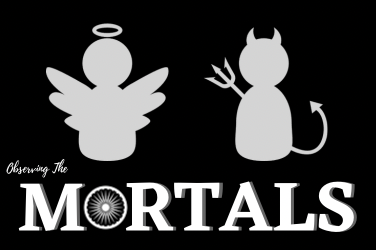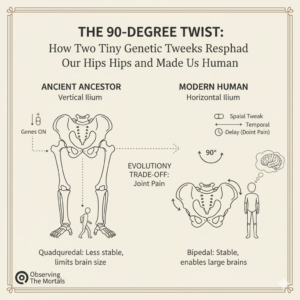The human skeleton is a remarkable archive. For an archaeologist, it’s a diary written in bone, revealing stories of diet, disease, trauma, and migration. But one of the most profound human experiences has remained almost completely invisible in this archive: pregnancy. For millennia, the lives of mothers and the realities of reproduction have been a near-blank page in the human story. Now, a groundbreaking new study from the University of Sheffield has found the first “hormone archive” hidden in ancient bones and teeth, offering a revolutionary way to detect pregnancy in individuals who died as far back as 1,000 years ago.
The Information Box
Syllabus Connection:
- Paper 1: Chapter 1.3 (Archaeological Anthropology – New Methods), Chapter 1.8 (Research Methods: Bio-archaeology), Chapter 9.6 (Medical Anthropology: Reproductive Health), Chapter 9.6 (Feminist Anthropology)
Key Concepts/Tags:
- Bioarchaeology, Paleopathology, Pregnancy, Reproductive Hormones, ELISA, Medical Anthropology, Feminist Anthropology
The Setting: Who, What, Where?
This case study is based on a pioneering study led by archaeologist Dr. Aimée Barlow at the University of Sheffield, published in the Journal of Archaeological Science. The research team analyzed hard tissues (bone, teeth, dental calculus) from 10 skeletons dating from the 1st to 19th centuries. The key innovation was the use of a biomedical technique called ELISA (enzyme-linked immunosorbent assay) to search for key reproductive hormones that were previously thought to be undetectable in ancient remains.
The Core Argument: Why This Study Matters
This is a “proof of concept” study that has the potential to open an entirely new field of archaeological inquiry.
- A “Hormone Archive” Exists: The central, groundbreaking discovery is that key reproductive hormones—specifically estrogen, progesterone, and testosterone—can and do preserve for centuries in human hard tissues like bone, dentin, and especially dental calculus (tartar). This was previously thought tobe impossible.
- Progesterone as a “Smoking Gun” for Pregnancy: The study identified progesterone as the most critical biomarker. While other hormones rise during pregnancy, progesterone levels “increase significantly” in the first trimester and stay high. The researchers found that in their samples, “high progesterone levels… [were] consistent with pregnancy at the time of death.”
- Making Women’s Lives Visible: This breakthrough is a massive step forward for feminist anthropology and bioarchaeology. It provides the first direct, biochemical method for identifying pregnancy, an experience central to the lives of countless women in the past but which, without the rare discovery of fetal bones, was almost entirely invisible to archaeologists.
The Anthropologist’s Gaze: A Critical Perspective
- The Power of Paleodemography: A critical anthropological perspective would focus on the profound future potential of this technology. As Dr. Barlow suggests, if this method can be refined, it could move beyond a simple “yes/no” for pregnancy. It could allow researchers to ask revolutionary questions about the reproductive histories and demography of past populations: What was the average age of first pregnancy? Can we identify pregnancy loss or miscarriages? What was the average time between births? This would add a rich, new, human-scale layer to our understanding of ancient populations.
- A “Proof of Concept,” Not a Finished Tool: As the experts in the article (like Nikolas Lemos) rightly point out, this is a pioneering “proof of concept,” not a routine tool… yet. The sample size (10 skeletons, with only 2 confirmed pregnant) is very small. Before this can be widely used, a massive amount of foundational research is needed to understand how hormones are preserved and to establish a “baseline” of normal hormone levels in skeletal tissue.
- The Bio-cultural Link: This method opens the door to powerful bio-cultural research. For example, archaeologists could now potentially compare the reproductive histories of women from a wealthy Roman villa with those from a poor burial ground, or compare women from a medieval nunnery with those from a lay cemetery. It creates a tool to scientifically test long-held historical hypotheses about female health, social status, and reproductive pressures.
The Exam Angle: How to Use This in Your Mains Answer
- Types of Questions Where It can be Used:
- “How have new scientific methods in archaeology changed our understanding of the past?”
- “Discuss the scope and significance of bioarchaeology in modern anthropology.”
- “Analyze the contribution of feminist anthropology to making women’s lives visible in the archaeological record.”
- Model Integration:
- On New Archaeological Methods: “New scientific methods are constantly expanding the scope of archaeology. For instance, a 2025 study on skeletal remains used the ELISA method to detect, for the first time, reproductive hormones like progesterone, opening a new window into studying ancient pregnancy.”
- On Feminist Anthropology: “Feminist anthropology seeks to make women’s lives visible in the archaeological record. The recent discovery of a ‘hormone archive’ in bones and teeth is a major breakthrough, offering a direct biochemical method to identify pregnancy in ancient remains, a fundamental female experience previously invisible to science.”
- On Bioarchaeology: “The scope of bioarchaeology has moved beyond bones and disease. Recent ‘proof of concept’ studies, like the one that successfully measured pregnancy hormones in ancient teeth, demonstrate the field’s potential to reconstruct the intimate reproductive histories of past populations.”
Observer’s Take
This study is a remarkable piece of scientific detective work. It’s about finding a way to listen to the stories that bones were not thought capable of telling. For millennia, the skeletal remains of women have been silent on one of the most central experiences of their lives. By finding a “hormone archive” in a 1,000-year-old tooth, these researchers have found a way to make these ancient mothers speak. While still in its infancy, this technique is a giant leap toward a more intimate, more complete, and more human understanding of our past, finally allowing us to study not just how people lived and died, but how new life began.
Source
- Title: Scientists are one step closer to testing ancient skeletons for pregnancy
- Author: Jack Guy
- Publication: CNN (reporting on a study in the Journal of Archaeological Science)





